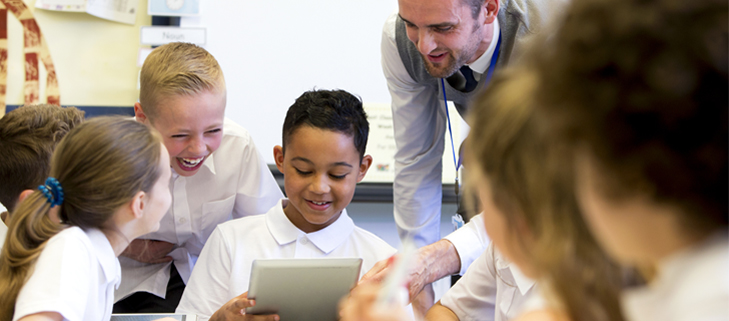Technology is ever-evolving and every industry is having to adapt and become more and more digitally orientated.
Within the last decade, many technological advancements have made it easier to perform simple tasks in our everyday lives. Products and services such as smartphones and social networking platforms have changed the way we engage and connect with one another.
Introducing more digital technology into the classroom is a highly debated topic. Some argue that students should be taught with the use of technology sooner rather than later, to ensure they are best equipped for our increasingly reliant digital future. On the other hand, many believe that current teaching methods are just fine as they are, and have been for generations.
Fortune 500 companies such as Microsoft and Google have tried to implement ways in which technology can be used within schools.
Microsoft have adapted the popular video game, Minecraft, to try to enhance engagement and learning in the classroom. ‘Minecraft: Education Edition’ helps pupils develop real life skills such as team working and trial and error, but also teaches more advanced skills like coding.
Google created ‘Google Classroom’ in 2014. It is designed to give teachers and students the ability to learn in a virtual environment. Teachers can create lesson plans for students which they can complete and hand in online. Teachers can also add videos and other applications to make work more enjoyable.
However, some believe that technology can have a detrimental effect on teaching. Statistics show that as of 2013, 37% of teenagers owned or had access to a smartphone. Many teenagers take their phones to school which can cause classroom disruption and can result in pupils being easily distracted, often causing them to miss key information.
One product commonly used within schools of late is the Apple iPad. Pupils can use various applications to aid their learning, for instance, the device can be used as a dictionary, to research topics of interest via the internet or to write pieces of work.
Many people believe that schools are not using technology to its full potential. With the wide array of new products being created every year, (such as virtual and augmented reality), schools have a range of sources which they could introduce to their classrooms.
Whilst some believe that teaching should be shifting towards a video or mobile solution in the future, this threatens to take away valuable life skills learnt in the current classroom environment. Classrooms at present provide students with a social experience in which they are surrounded by peers. If this experience is taken away, it may negatively impact student’s ability to socialise, develop and maintain friendships/relationships.
No-one can deny that classrooms have performed successfully for many years. In spite of this, as other industries are adapting to the use of new technologies, schools need to move with the times to ensure that our students are not being left behind on the global stage. However, it is important to maintain a balance of technology and current methods as human interaction still plays a vital role in education. Face-to-face teaching allows students and teachers freedom to explain ideas, whilst promoting a more sociable learning experience.

